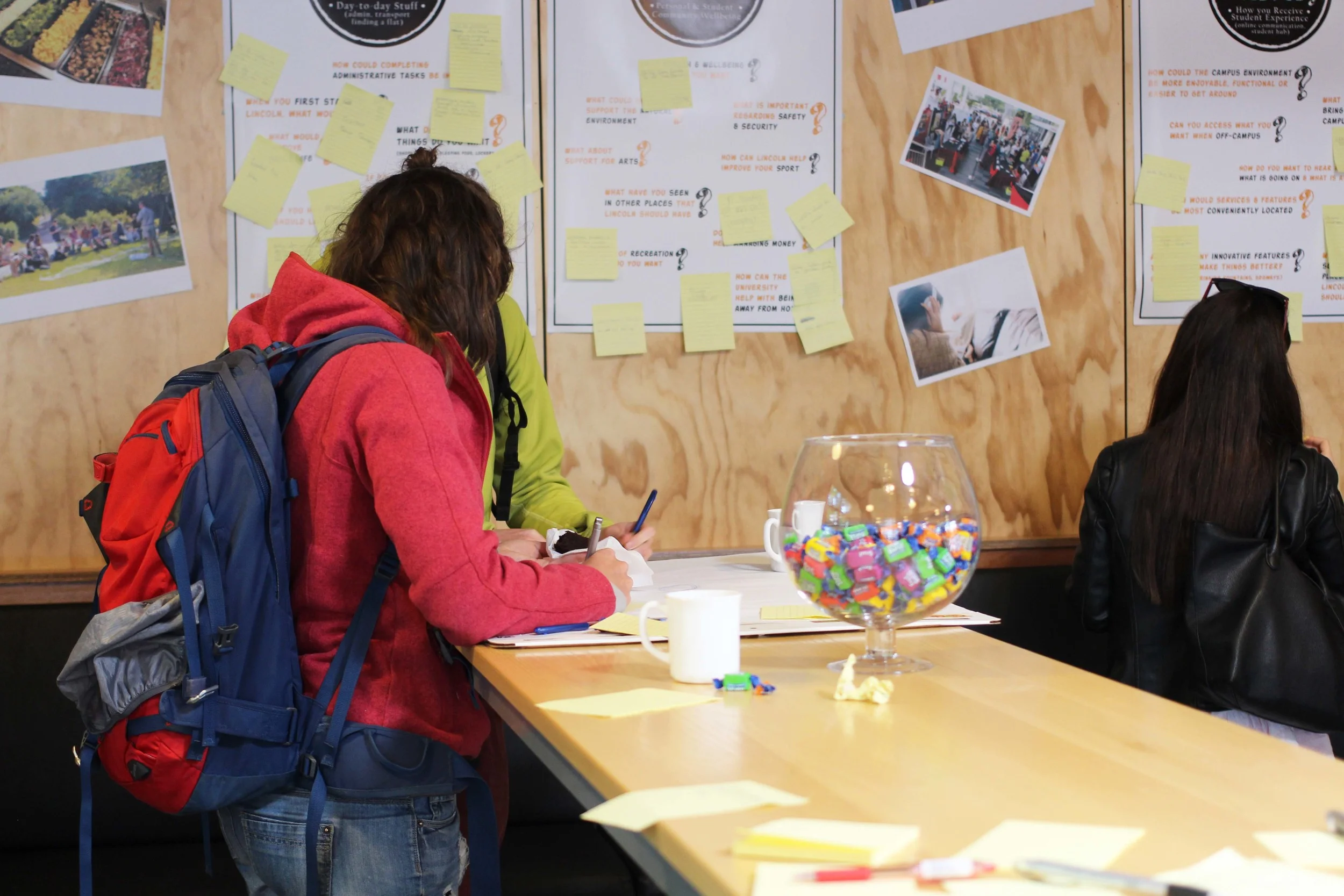Seafarers Rest is a public park in the Docklands area of Melbourne that is earmarked for renewal. The City of Melbourne (CoM) worked in partnership with the Victorian Government, developer Riverlee, and landscape architects Oculus to create a park that meets a myriad of purposes – increase pedestrian and cycle access and improve public amenity, while protecting neighbouring heritage sites, preserving trees where possible, and responding to the site’s contexts and constraints.
Finding out what Lincoln University students want ~ Lincoln University Student Experience
Five partners collaborate for New Zealand’s land based future ~ Lincoln Hub Plan Preparation
In 2013 the five Lincoln Hub Partners embarked on an ambitious plan to bring their organisations closer together to deliver greater land based sector returns for New Zealand. New Zealand’s economic, social and environmental future is dependent on this improvement as this sector currently returns 30% of GDP and the New Zealand Government’s aim is to increase this to 40% by 2025. GDP growth will not be cost-free however, as the sector is based on the use of natural resources; the aim is to increase productivity and economic returns, while at the same time reducing environmental impacts.
The Lincoln Hub aims to deliver its collaboration physically, scientifically and operationally at Lincoln in Canterbury New Zealand.
SAY Now Programme Evaluation ~ Sport Canterbury
Sport Assisting Youth Now (SAY Now) is a collaborative education awareness approach to reducing alcohol-related harm through sports clubs. SAY Now provides a forum for bringing together sporting role models and key stakeholders (e.g. health professionals, NZ Police, local government, Accident Compensation Corporation) to raise awareness of alcohol-related harm with young people in sport settings.
Preparation of business case to New Zealand Government ~ Lincoln University
Lincoln University was significantly impacted by Canterbury’s 2010 - 2011 earthquakes, with damage to its two largest science buildings resulting in 40% of its academic floor space being deemed permanently unusable.
In order to secure financial assistance for replacement facilities from the New Zealand Government, the University was requested to prepare a New Zealand Treasury Better Business Case.
Oslo plans for quality human experiences in public spaces ~ Gehl Architect’s Public Space Public Life survey
Oslo’s population is projected to grow by 30% over the next 15 years from its current 600,000 to around 800,000. With this growth comes development opportunities as well as some challenges. As Oslo grows its goals are to increase activity, urban life and safety perceptions and ultimately improve cultural activity and business returns.
Christchurch's Central Recovery Plan Liveable City Chapter ~ Canterbury Earthquake Recovery Authority (CERA)
In 2014 CERA developed a draft residential chapter titled A Liveable City to add to the Christchurch Central Recovery Plan. The draft chapter proposed some changes to the Christchurch City Plan (the District Plan). Global Research was contracted to develop a questioning approach which efficiently and effectively measured stakeholders’ and citizens’ opinions on the draft chapter and to also complete the collation, synthesis, analysis and reporting on all received comments.
Highly ranked Christchurch hotel knows its guests ~ Commodore Airport Hotel
The Commodore Airport Hotel is one of Christchurch’s finest. The recent opening of its new wing and ongoing popularity are testament to it continually aspiring to be the best and achieving that aspiration.
Hotel management saw the need to refresh how it was measuring guest satisfaction with its facilities and services. Its aim was to find out from those who matter most, their guests: what is being done well; what can be improved; and to pick up ideas for doing things better. It also wanted to learn as much as possible from the comments offered by guests through social media, such as TripAdvisor.
Outdoor recreation visitors have their say: National Visitor Survey 2004, 2005, 2006 ~ Department of Conservation
New Zealand’s Department of Conservation (DOC) wanted to measure visitor satisfaction with recreation track quality and perceptions of visitor crowding across a representative sample of its 2050 easily accessible through to remote tracks. It also wanted to find out general demographic information about its visitors. In 2004, 2005 and 2006 it engaged GR (then Leisure Matters) to design and manage this research. A representative range of around 500 DOC sites were surveyed over three years.
Local communities have their say in rebuilding their suburbs ~ CCC’s Master Plans
Post the 2010/2011 Canterbury earthquakes Christchurch City Council (CCC) prepared nine Suburban Master Plans to assist with the recovery of the city, as part of its Suburban Centres Programme.
CCC consulted with the public to ensure the Plans were in accordance with each community’s wishes and to inform each plan’s development. The plans were then refined to better meet the community’s needs.
Ngā Puna Wai sports hub consultation ~ Christchurch City Council
The destructive 2010/2011 Canterbury earthquakes severely damaged much of Christchurch’s sporting infrastructure. This included the main track and field, hockey and tennis facilities being damaged beyond repair.
Council staff investigated possible replacement locations for these facilities before arriving at their preferred option, a joint sports hub at Nga Puna Wai, 83 hectares of land beside Canterbury Agricultural Park in southwest Christchurch.











